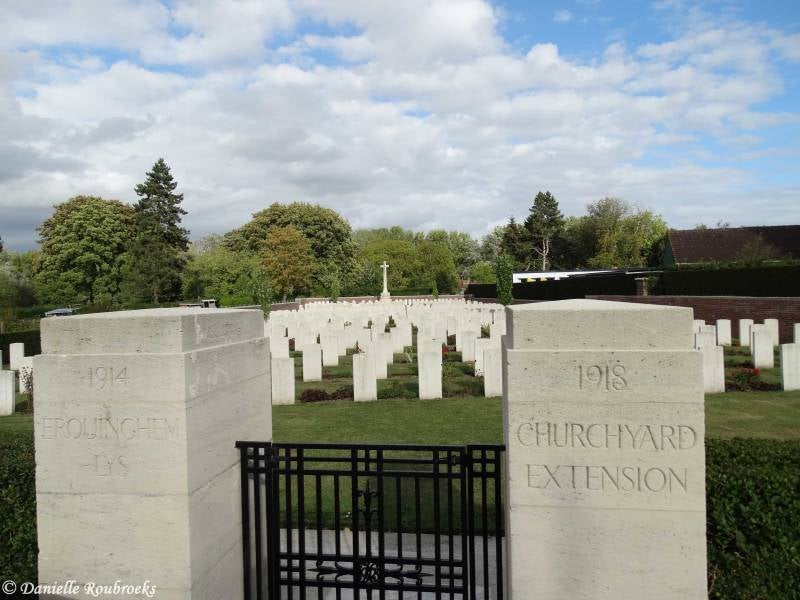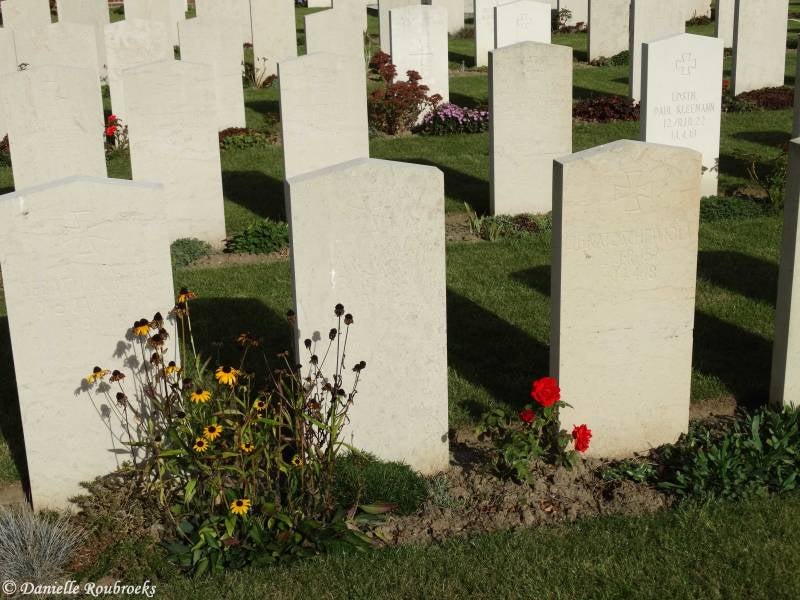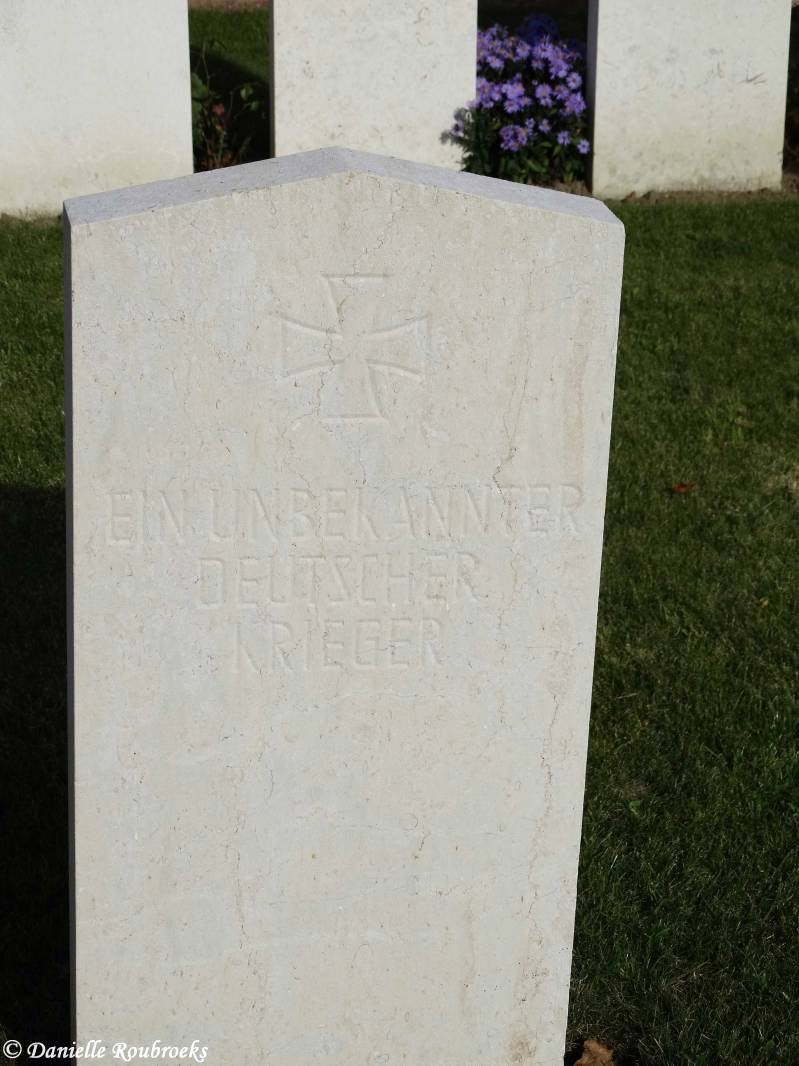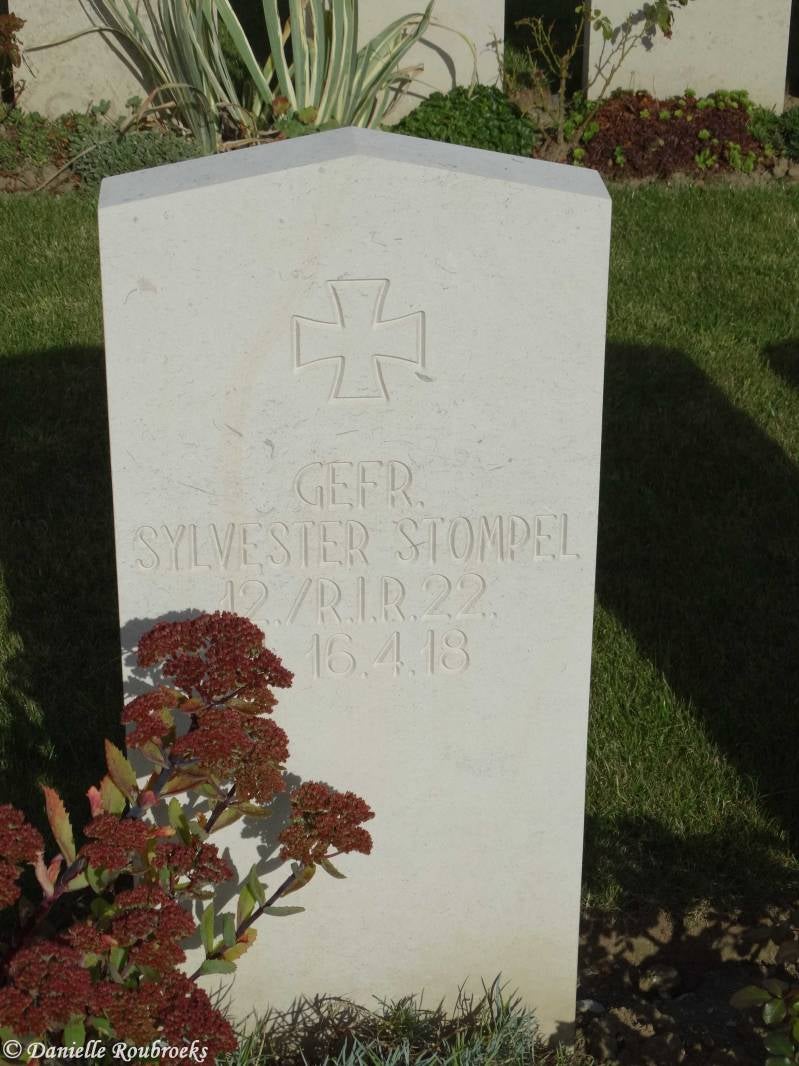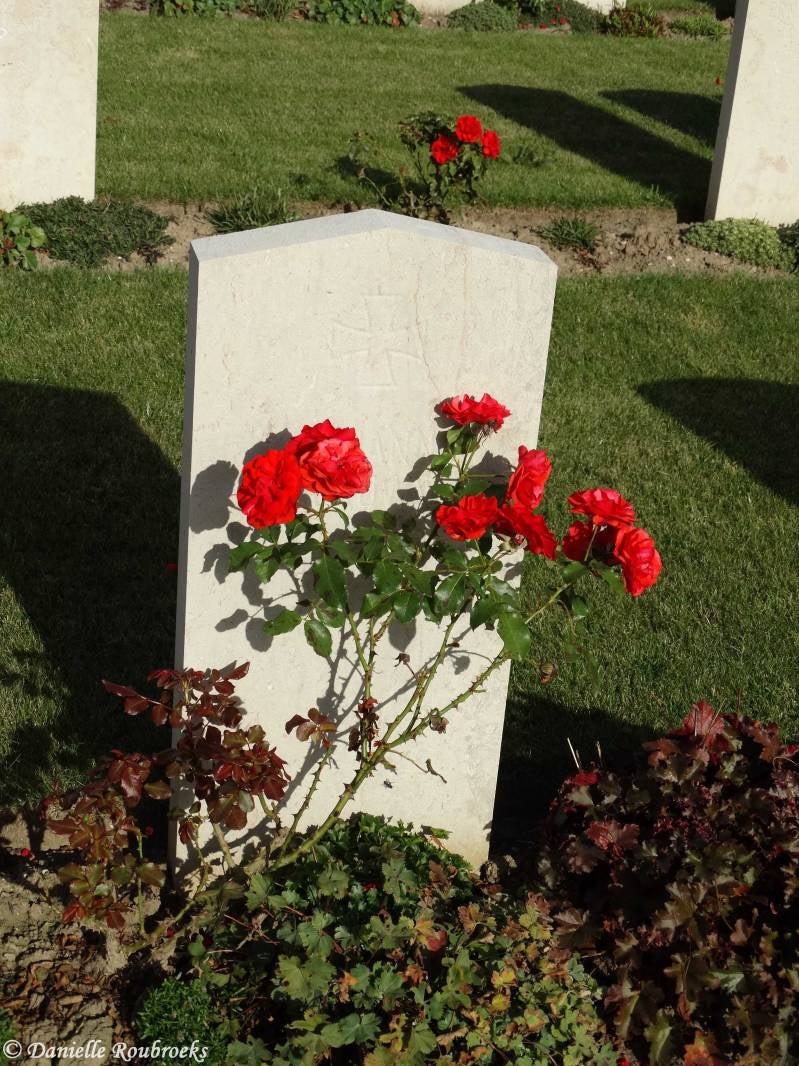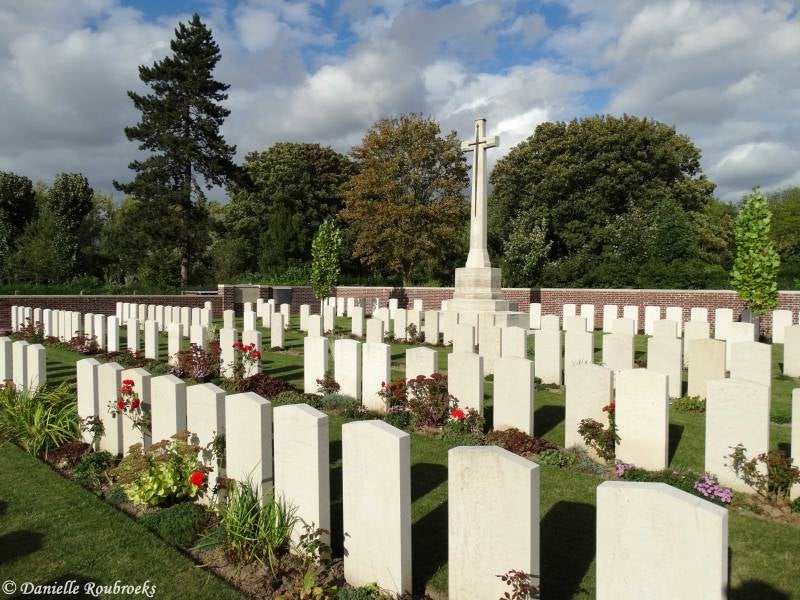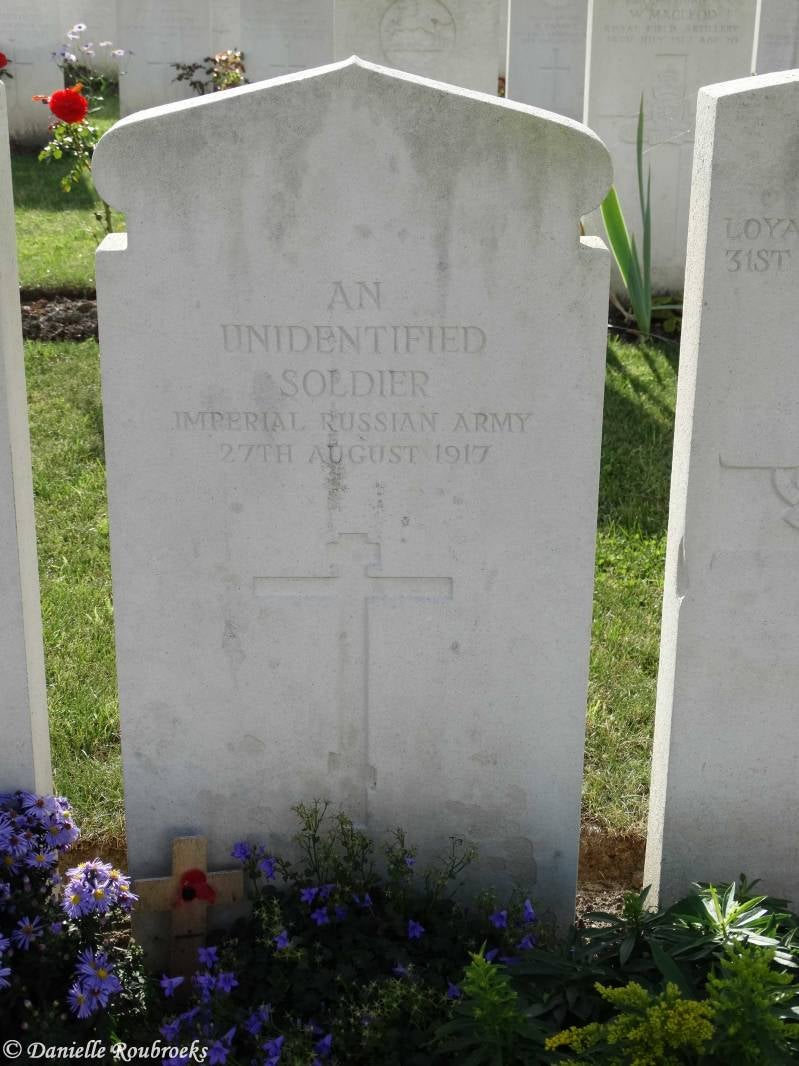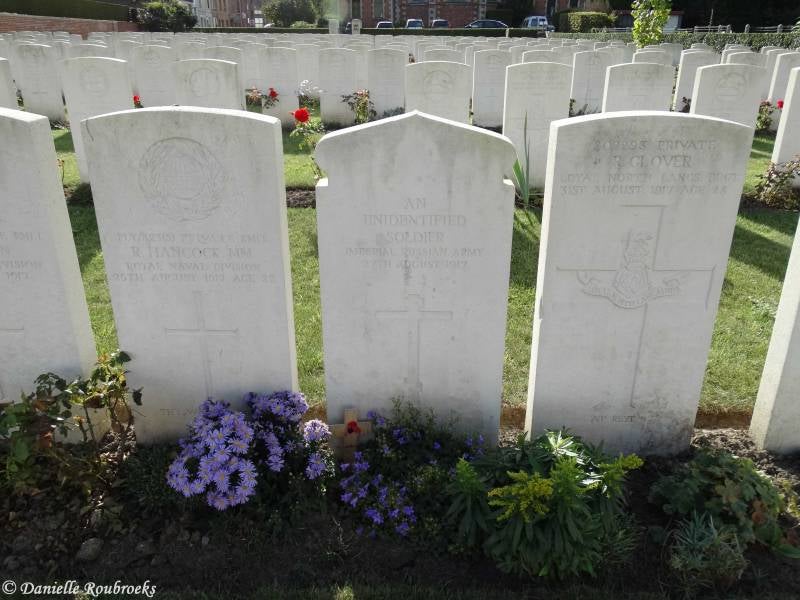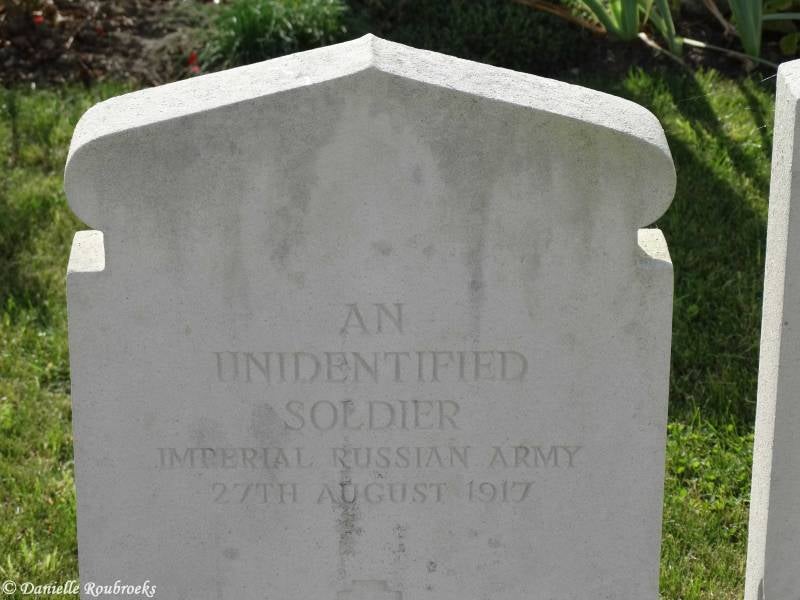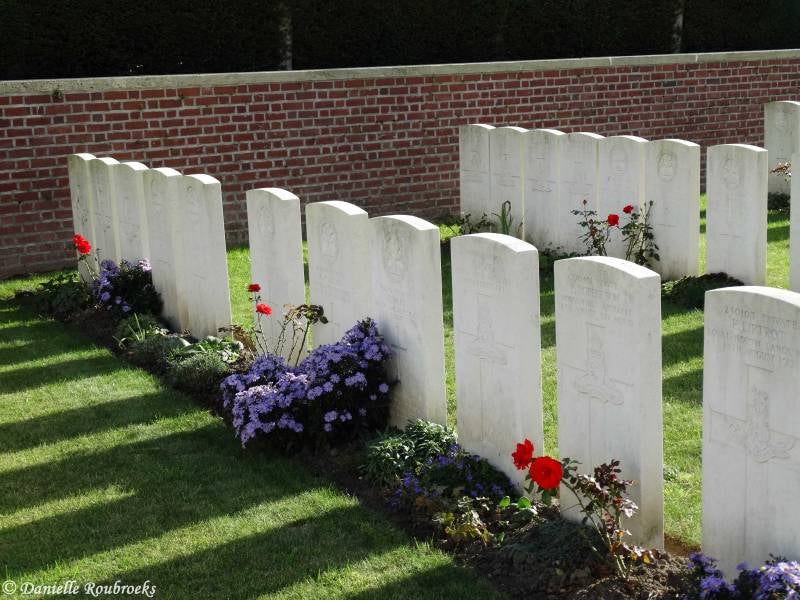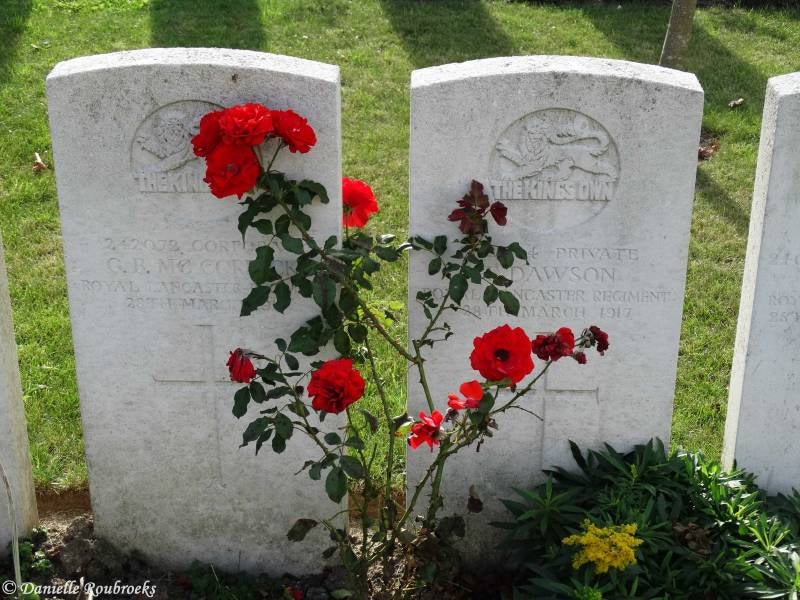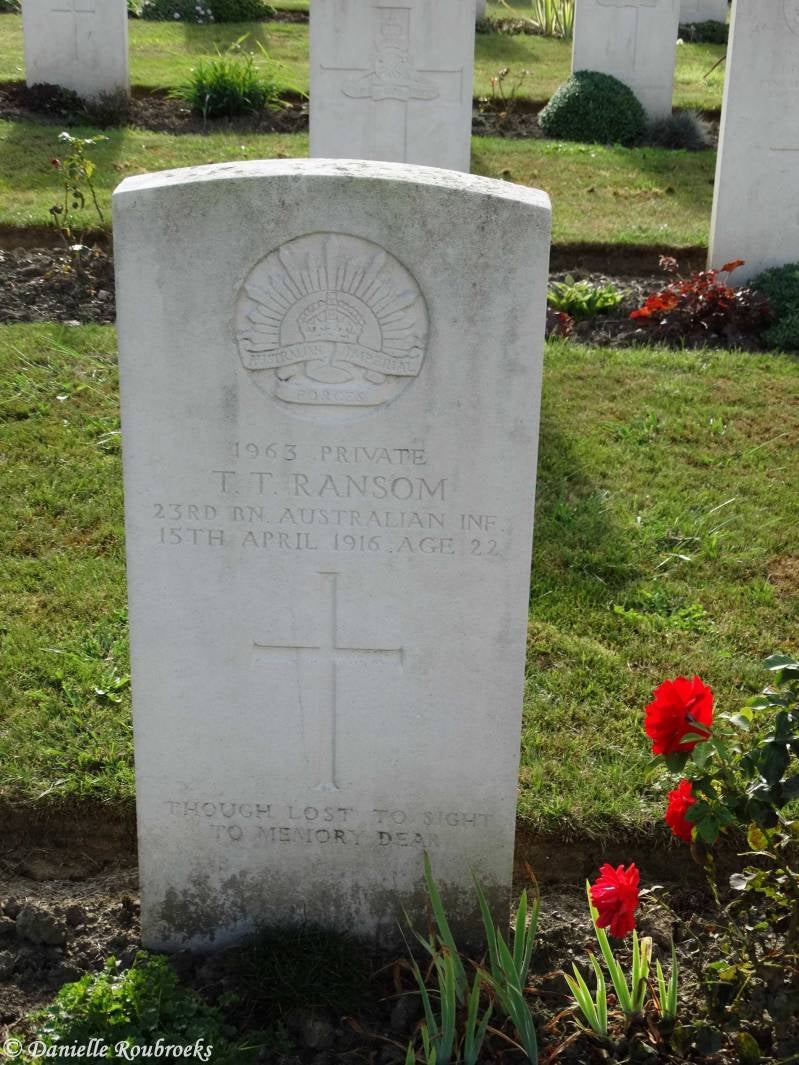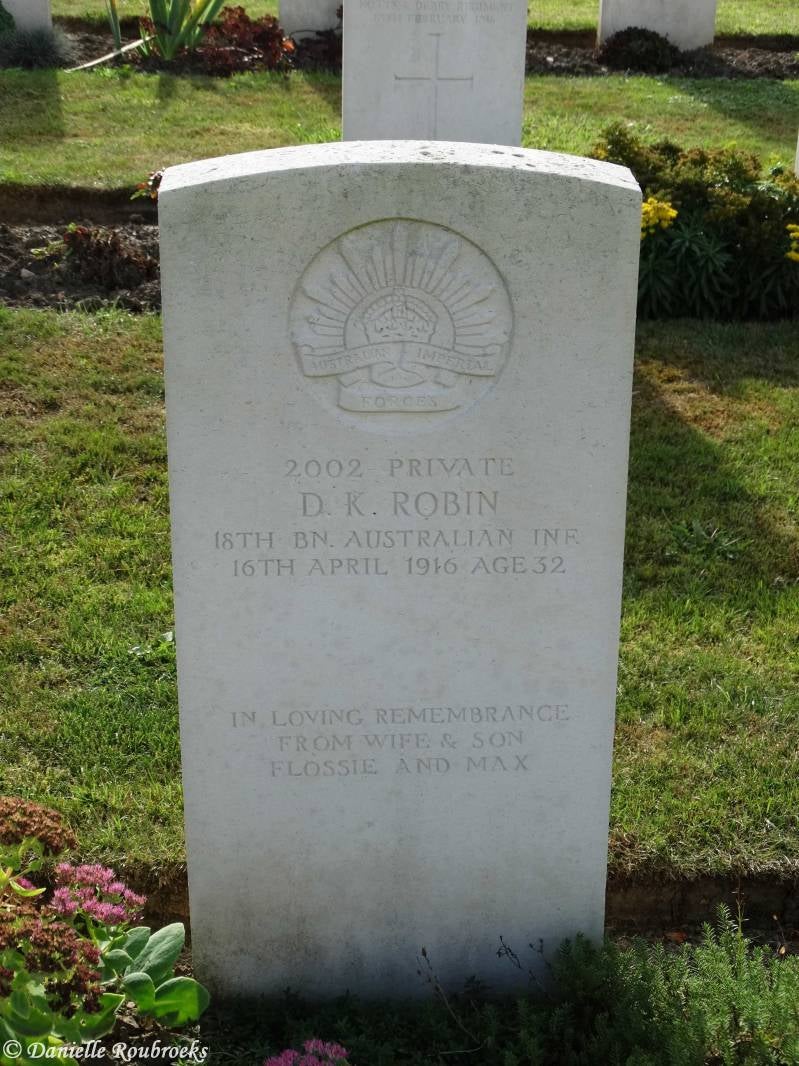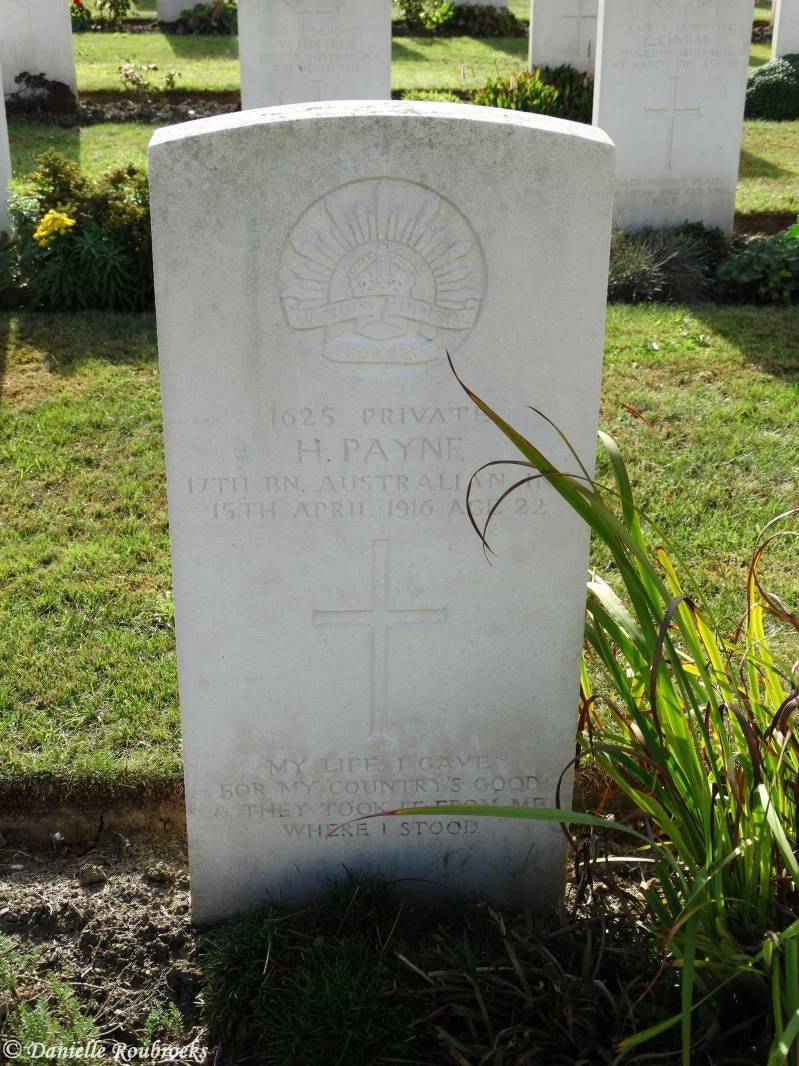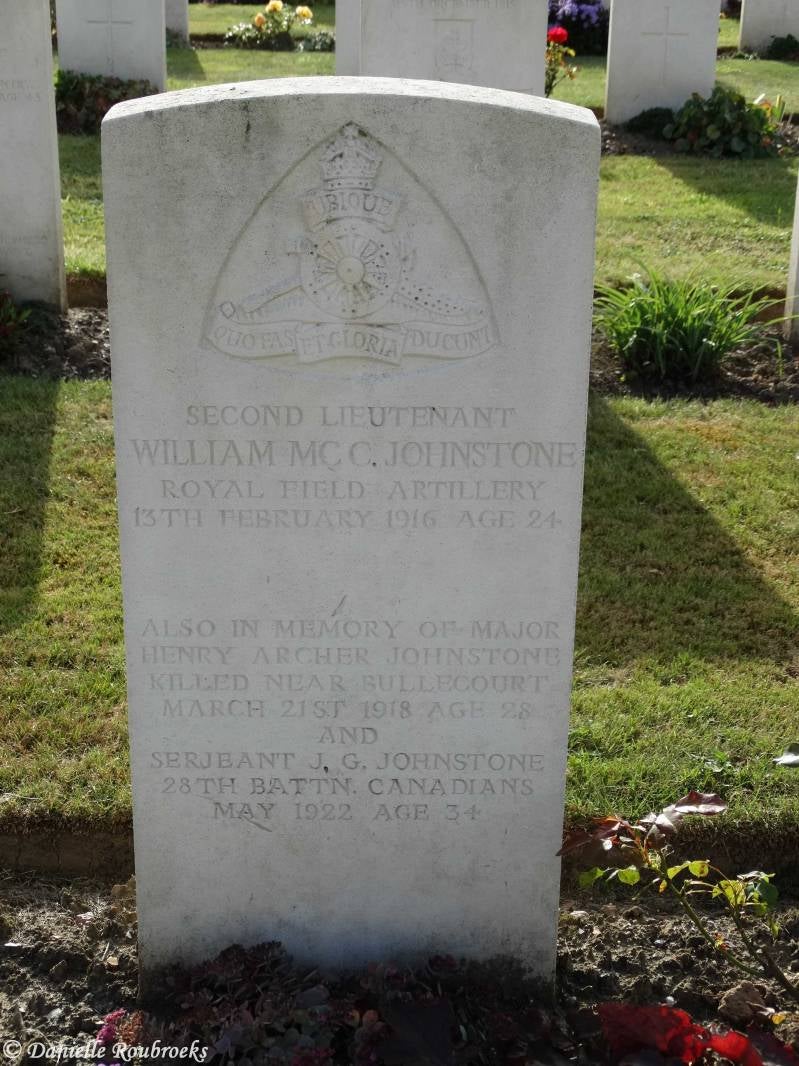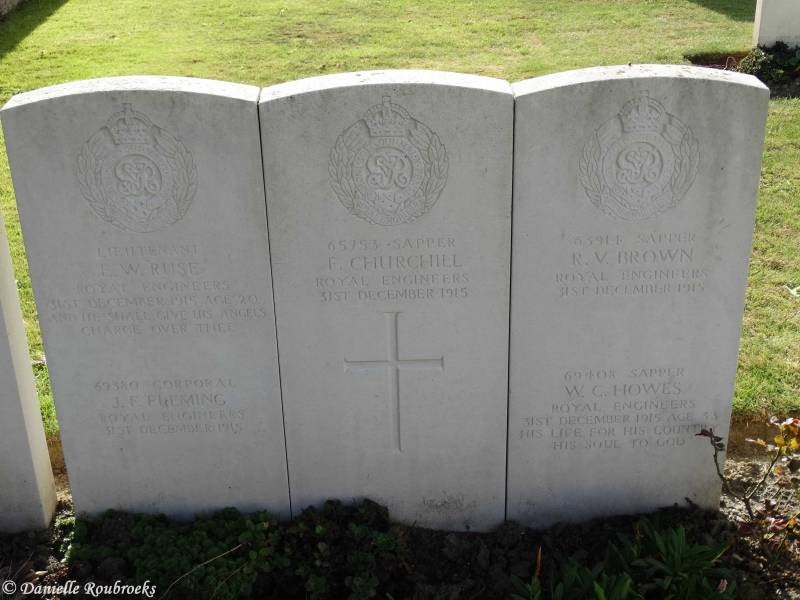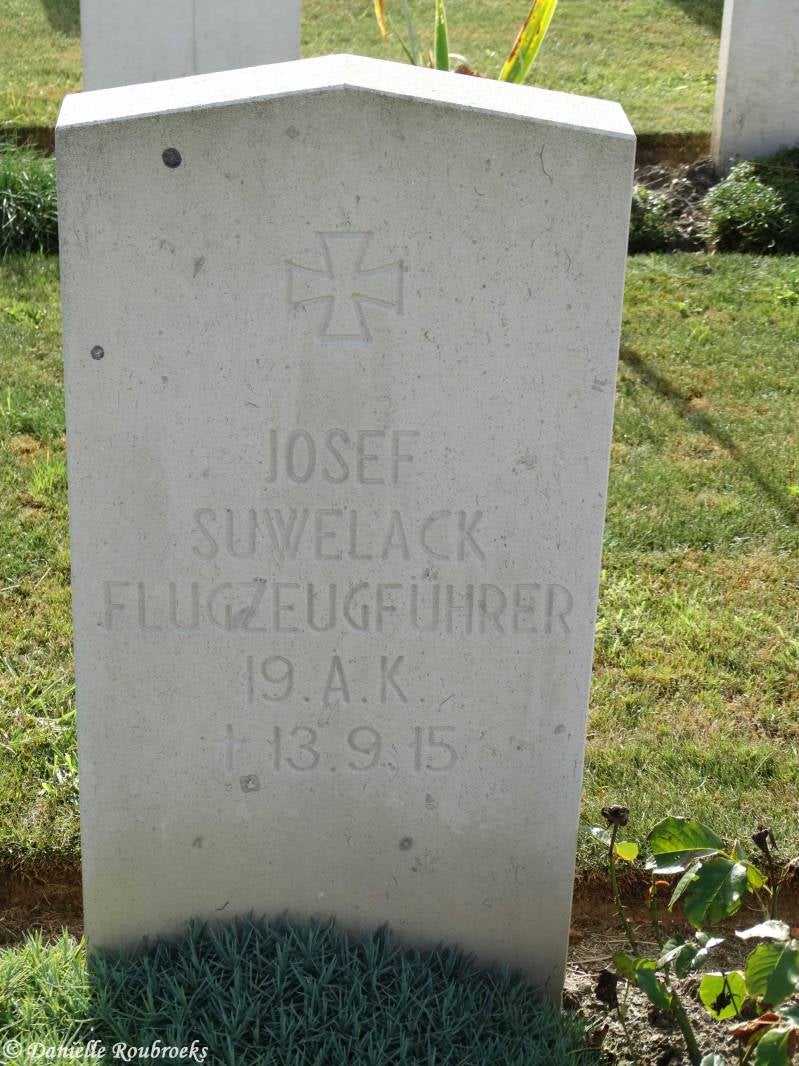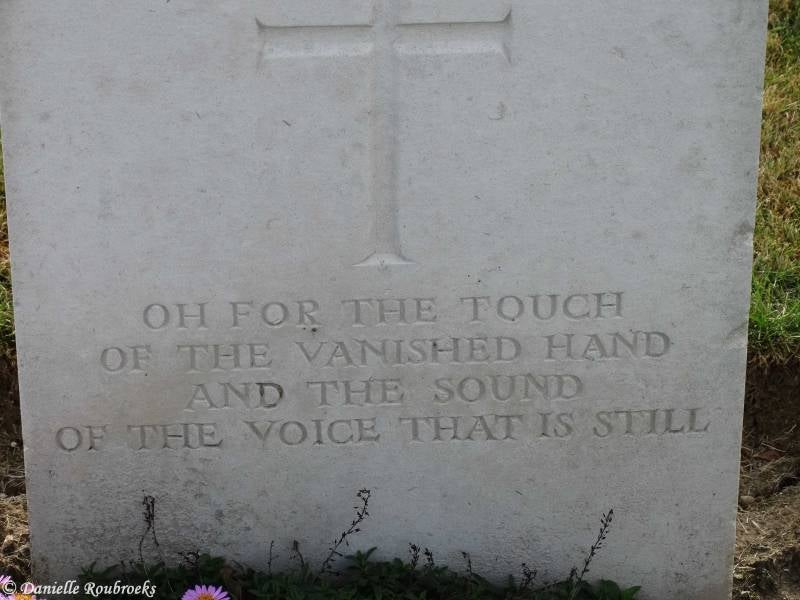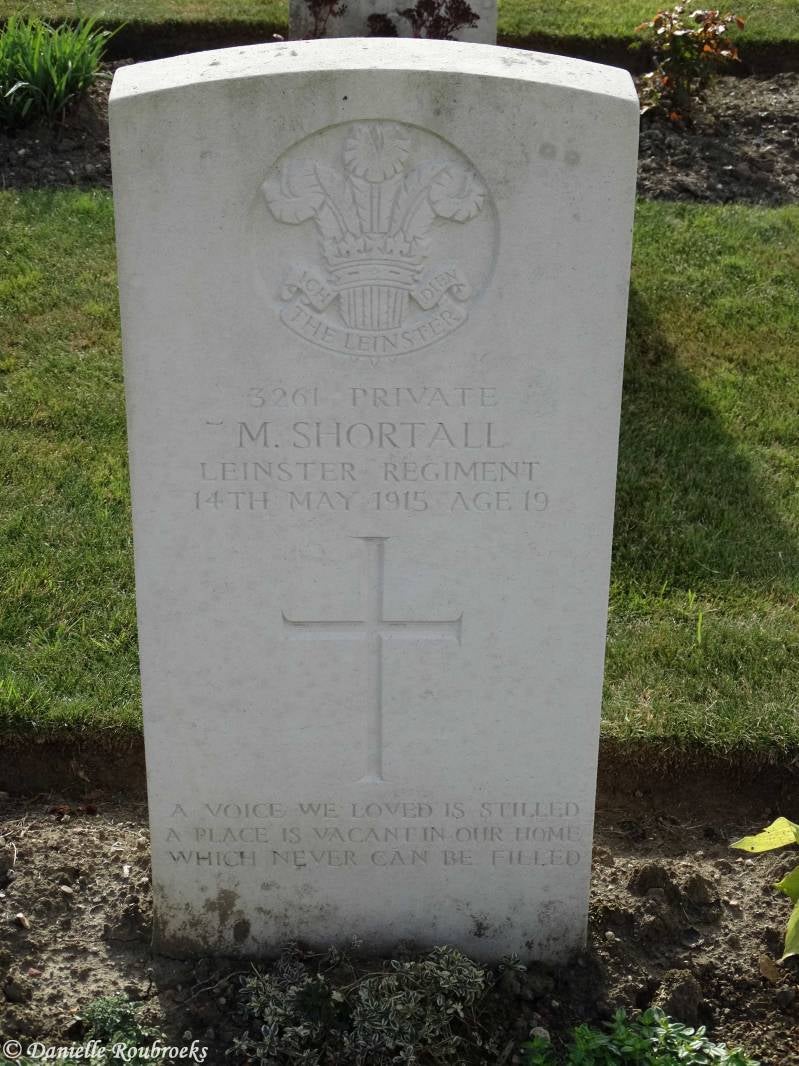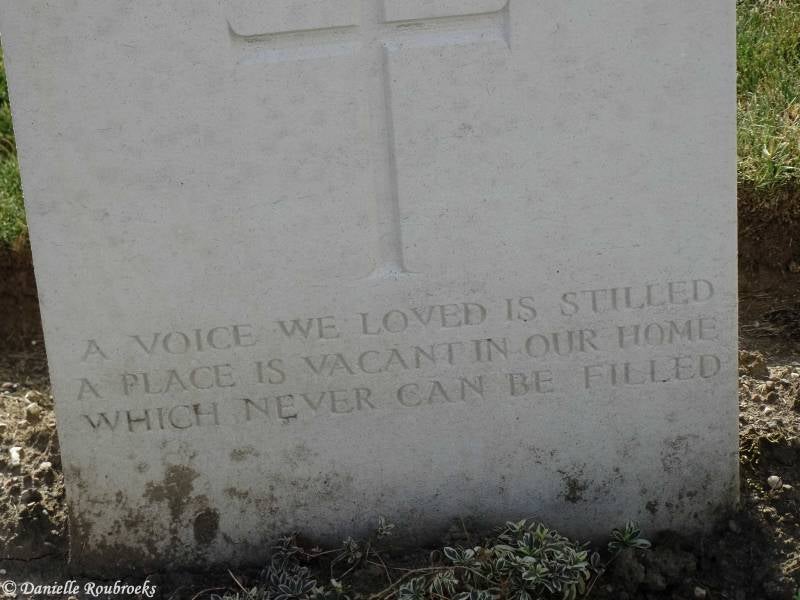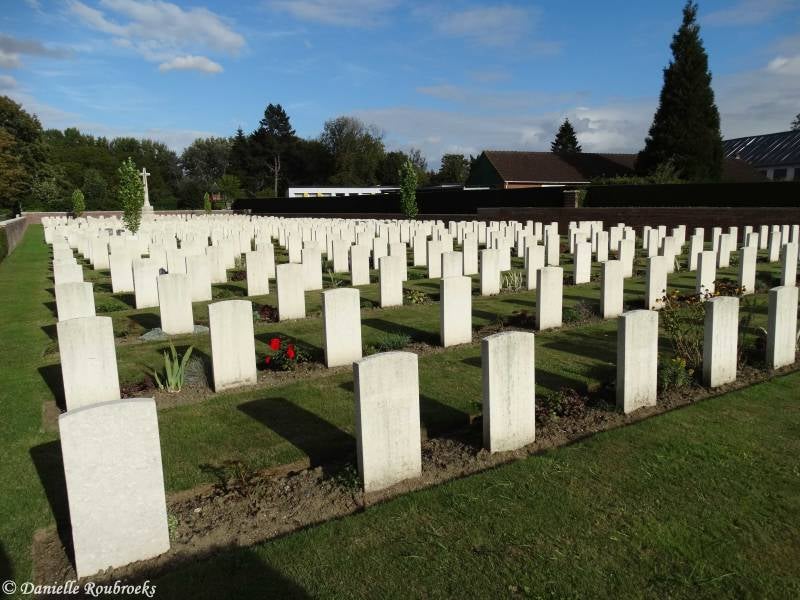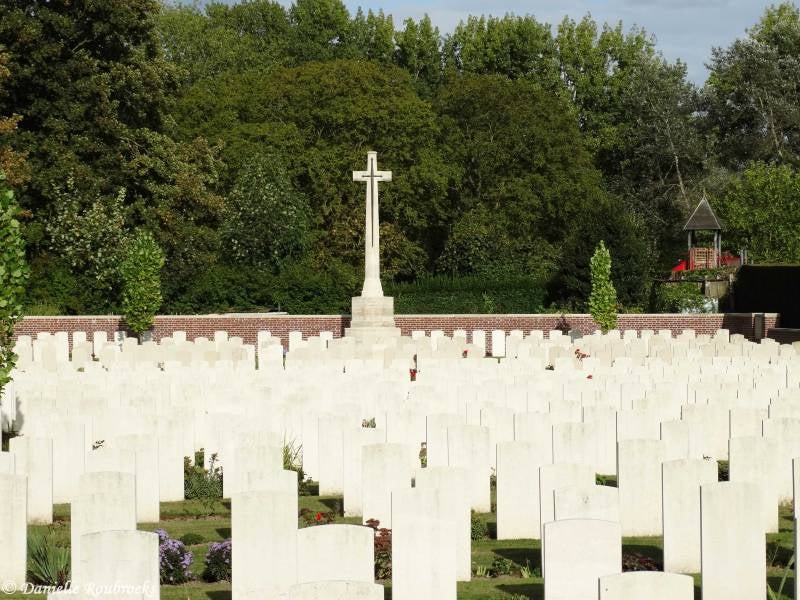Erquinghem-Lys Churchyard Extension
Historical Information (Source: CWGC)
The village of Erquinghem-Lys was occupied by German forces early in October 1914, and taken by the 1st Somerset Light Infantry on 16 October. It remained in Allied hands until 10 April 1918, when the 101st Infantry Brigade and the 1st/4th Duke of Wellington's, after a stubborn defence, evacuated the village during the great German offensive. The village was finally retaken in September 1918. The earliest Commonwealth burials were made in two places in the churchyard itself, in October 1914-January 1915, but these 27 graves were moved into the extension (Plot II, Row G, and Plot III, Row G) in 1925, the churchyard being closed for burials. The extension was begun in April 1915 and used by units and field ambulances until April 1918. It was continued down to the stream by the Germans (who also used the churchyard) in the summer of 1918, and in September and October 1918, it was used again for some Commonwealth burials.
The extension now contains 558 Commonwealth burials of the First World War (eight of them unidentified) and 130 German burials. One unidentified Russian servicemen is also buried in the extension. The extension was designed by Sir Herbert Baker.
Served with
- United Kingdom (515)
- German (128)
- Australian (32)
- New Zealand (3)
- Canadian (2)
Served in
- Army (676)
- Air Force (2)
- Navy (2)





